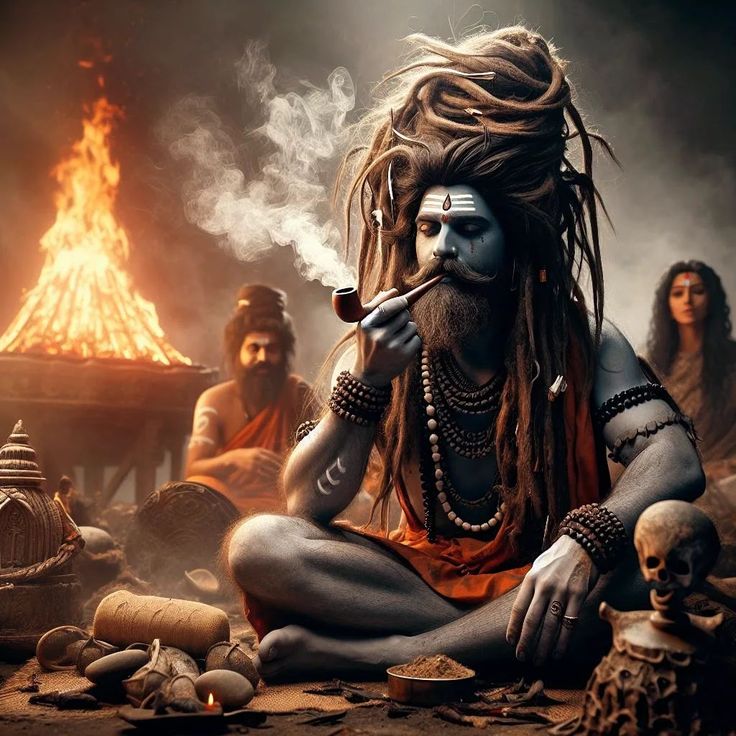Facts About Aghoris: Exploring the Unconventional Practices of India’s Mystical Shaivite Sect
Facts About Aghoris are a fascinating and often misunderstood sect of ascetic Shaivite practitioners in India. Known for their extreme and unconventional practices, the Aghoris live a life that is deliberately provocative and designed to transcend societal norms. Their beliefs and practices are deeply rooted in the philosophy of Shaivism, which venerates Lord Shiva as the supreme deity. While they are often regarded with fear and awe, the Aghoris themselves see their way of life as a path to spiritual liberation, free from the confines of worldly limitations.
In this article, we’ll delve into the lesser-known aspects of the Aghori tradition, shedding light on their practices, philosophy, and the way they interact with society. From their history to their controversial rituals, here’s everything you need to know about this mystic sect.
History: Facts About Aghoris
The origins of the Aghori sect are deeply connected to the ancient and mystic traditions of Shaivism, one of the oldest and most prominent spiritual practices in India. The word “Aghori” is derived from the Sanskrit term “Aghora,” which translates to “non-terrifying” or “beyond fear.” This reflects the core belief of the Aghoris—that they transcend the dualities of good and evil, purity and impurity, life and death.
While the exact history of the Aghoris is difficult to trace, they are believed to have emerged as a distinct sect around the 12th century. The Aghoris follow the teachings of Lord Shiva and worship him in his most fearsome form, Bhairava. This intense reverence for Shiva’s destructive and transformative aspects is reflected in their practices.
Practices and Beliefs: Facts About Aghoris
The practices of the Aghoris are often shocking to outsiders due to their extreme nature. However, to understand these practices fully, one must look at the deeper spiritual motivations behind them:
- Breaking Social Norms: Aghoris believe that the material world and its societal rules are mere illusions (Maya). To break free from the cycle of birth and death (Samsara), they engage in practices that reject societal norms and embrace everything, including what is considered taboo or impure by conventional society. This includes their ritual use of cremation grounds, consumption of substances that are considered unclean, and their unorthodox lifestyle.
- Cremation Ground Rituals: One of the most misunderstood practices of the Aghoris involves their frequent use of cremation grounds as places of meditation and spiritual rituals. They believe that by meditating on the remains of the dead, they can overcome the fear of death and gain deeper insights into the nature of life and the universe.
- Consumption of ‘Impure’ Substances: Aghoris are known for consuming substances that society deems impure, such as alcohol, meat, and even human flesh in some cases (although this is extremely rare). They believe that by partaking in these substances, they can transcend the mind’s attachment to purity and impurity, and that this helps them achieve spiritual liberation.
- Embracing Death: The Aghori philosophy revolves around the idea that life and death are not separate entities but part of a continuous cycle. By embracing death, they aim to free themselves from the fear of mortality and the ego, which binds them to the material world.
Daily Life Impacts: Facts About Aghoris
Living as an Aghori is a life of intense discipline and spiritual commitment. Their daily life is marked by meditation, rituals, and a deep focus on the pursuit of spiritual enlightenment. Some key aspects of their daily routine include:
- Meditation and Chanting: Aghoris spend a significant portion of their day meditating and chanting mantras, seeking to attain higher states of consciousness and divine insight. This practice helps them detach from worldly desires and connect with Lord Shiva.
- Rejection of Materialism: Aghoris reject material wealth and luxury, instead focusing on the pursuit of spiritual growth. They often live in austere conditions, without attachment to possessions or personal comforts.
- Community and Isolation: While they may engage in communal rituals and have spiritual mentors, many Aghoris live in isolation, often in places like cremation grounds or secluded temples. This isolation allows them to focus on their spiritual practices without distractions.
Significance: Facts About Aghoris
The Aghoris are often seen as a controversial and enigmatic group, with their practices sometimes viewed as extreme or even horrifying. However, they hold a unique place in Indian society and have an important role to play in the larger spiritual landscape:
- Spiritual Liberation: Aghoris believe that by breaking free from the illusions of the material world, they can achieve Moksha (liberation from the cycle of birth and death). Their practices are aimed at overcoming attachment to the physical body, material desires, and the fear of death.
- Challenging Social Norms: By rejecting conventional ideas of purity, morality, and social order, the Aghoris challenge the rigid structures of society. Their way of life forces society to confront its preconceived notions of what is “right” and “wrong,” offering a path to transcend these dualities.
- Healing Powers: In addition to their spiritual practices, some Aghoris are believed to possess healing abilities, particularly in relation to mental health issues. They use their deep connection to the divine to perform rituals that are believed to cure ailments and provide spiritual guidance to those in need.
FAQs: Facts About Aghoris
- What is the goal of Aghoris? The ultimate goal of the Aghoris is spiritual liberation (Moksha). They seek to transcend the limitations of the material world, overcoming dualities like life and death, purity and impurity, to achieve unity with the divine.
- Do Aghoris really consume human flesh? While Aghoris are known for their unconventional practices, the consumption of human flesh is not a common or regular practice. This act, when it occurs, is believed to symbolize the transcending of societal taboos and the complete rejection of attachment to the physical world.
- Are Aghoris violent or dangerous? Aghoris are not violent by nature. Their practices may seem shocking or extreme, but they are rooted in a deep commitment to spiritual growth. They do not harm others intentionally and often seek to help people through their healing rituals.
- Where do Aghoris live? Many Aghoris live in secluded areas, often in cremation grounds or remote temples, where they can focus on their spiritual practices without interference from the outside world. They live in a state of renunciation, free from worldly distractions.
- Can anyone become an Aghori? Becoming an Aghori is a serious commitment. It requires complete dedication to the spiritual path, including meditation, renunciation of material possessions, and a willingness to embrace unconventional practices. Most Aghoris are initiated by a spiritual teacher or guru.
The Significance in Modern Society: Facts About Aghoris
While Aghoris may seem like an enigmatic and extreme sect, their presence in society serves as a powerful reminder of the diverse ways humans seek spiritual enlightenment. They challenge us to reconsider our notions of purity, morality, and the nature of life itself. In a world that often values material success and superficial appearances, the Aghoris offer a radical alternative: a life dedicated to transcending the ego and experiencing the divine in its most raw, unfiltered form.
In conclusion, the Aghoris are a unique and profound sect that represents the depth and complexity of India’s spiritual traditions. Despite being misunderstood by many, their practices are rooted in a deep, transformative philosophy that seeks to help individuals break free from the constraints of the material world and achieve spiritual liberation.










